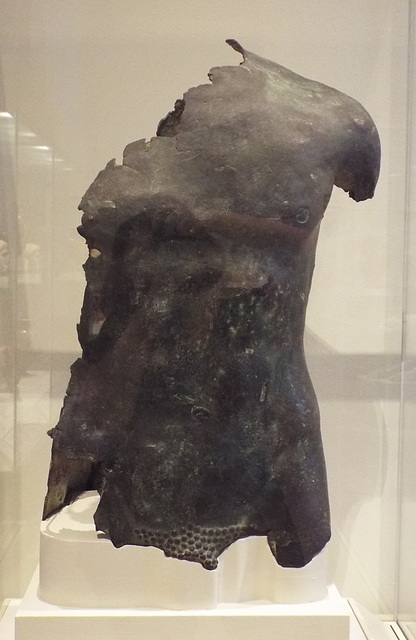Terracotta Neck-Amphora Attributed to the Medea Gr…
Terracotta Neck-Amphora Attributed to the Medea Gr…
Detail of a Terracotta Neck-Amphora Attributed to…
Detail of a Terracotta Neck-Amphora Attributed to…
Terracotta Neck-Amphora Attributed to the Lykaon P…
Terracotta Neck-Amphora Attributed to the Lykaon P…
Detail of a Terracotta Neck-Amphora Attributed to…
Detail of a Terracotta Neck-Amphora Attributed to…
Detail of a Terracotta Neck-Amphora Attributed to…
Detail of a Terracotta Neck-Amphora Attributed to…
Detail of a Terracotta Neck-Amphora Attributed to…
Detail of a Fragment of a Hanging with the Goddess…
Detail of a Fragment of a Hanging with the Goddess…
Holy Family in the Metropolitan Museum of Art, Jan…
Marble Table Base with the Story of Jonah in the M…
Marble Table Base with the Story of Jonah in the M…
Marble Table Base with the Story of Jonah in the M…
Marble Table Base with the Story of Jonah in the M…
Bronze Lid and Upper Part of an Oil Flask in the M…
Bronze Lid and Upper Part of an Oil Flask in the M…
Etruscan Bronze Shield Boss with a Griffin and Sph…
Etruscan Bronze Shield Boss with a Griffin and Sph…
Etruscan Terracotta Holmos and Dinos in the Metrop…
Bronze Statuette of a Siren in the Metropolitan Mu…
Wall Painting of Apollo and Daphne from the Villa…
Wall Painting of Apollo and Daphne from the Villa…
Detail of a Wall Painting of Medea Planning the Mu…
Detail of a Wall Painting of Medea Planning the Mu…
Detail of a Wall Painting of Medea Planning the Mu…
Detail of a Wall Painting of Medea Planning the Mu…
Wall Painting of Medea Planning the Murder of her…
Wall Painting of Medea Planning the Murder of her…
Marble Relief Pan & Ithyphallic Mule2 Marble Relie…
Marble Relief of Pan on an Ithyphallic Mule in the…
Detail of a Relief with a Representation of the Vi…
Detail of a Relief with a Representation of the Vi…
Detail of a Relief with a Representation of the Vi…
Detail of a Relief with a Representation of the Vi…
Detail of a Relief with a Representation of the Vi…
Detail of a Relief with a Representation of the Vi…
Relief with a Representation of the Visit of Diony…
Relief with a Representation of the Visit of Diony…
Detail of a Relief with Herakles Initiated into th…
Detail of a Relief with Herakles Initiated into th…
Relief with Herakles Initiated into the Eleusinian…
See also...
Keywords
Authorizations, license
-
Visible by: Everyone -
All rights reserved
-
246 visits
Bronze Torso of a Youth in the Metropolitan Museum of Art, April 2017


Bronze torso of a youth
Period:Archaic or Classical
Date:1st half of the 5th century B.C.
Culture:Greek
Medium:Bronze
Dimensions:H. 29 3/4 in. (75.6 cm)
Classification:Bronzes
Credit Line:Rogers Fund, 1920
Accession Number:20.194
Roman overcast of a Greek bronze statue of the early 5th century B.C.
In antiquity most large freestanding statues were made of bronze rather than marble. Hundreds honoring victorious athletes, poets, or generals stood in the great sanctuaries, as well as in civic centers. The majority of these works are lost–melted down at some point in order to reuse the metal. We know something of their appearance because the Romans admired many of the well-known statues and had them copied in marble, sometimes in bronze. This torso appears to be a bronze replica of a Greek bronze statue dating from the early fifth century B.C. During that period, sculptors were beginning to substitute a more relaxed naturalistic stance for the rigid pose that had been used for a hundred and fifty years to represent a youth. The fact that the left hip seems slightly higher than the right suggests that this figure may have been posed with most of its weight on the left leg and the right knee slightly bent.
Text from: www.metmuseum.org/art/collection/search/250947
Period:Archaic or Classical
Date:1st half of the 5th century B.C.
Culture:Greek
Medium:Bronze
Dimensions:H. 29 3/4 in. (75.6 cm)
Classification:Bronzes
Credit Line:Rogers Fund, 1920
Accession Number:20.194
Roman overcast of a Greek bronze statue of the early 5th century B.C.
In antiquity most large freestanding statues were made of bronze rather than marble. Hundreds honoring victorious athletes, poets, or generals stood in the great sanctuaries, as well as in civic centers. The majority of these works are lost–melted down at some point in order to reuse the metal. We know something of their appearance because the Romans admired many of the well-known statues and had them copied in marble, sometimes in bronze. This torso appears to be a bronze replica of a Greek bronze statue dating from the early fifth century B.C. During that period, sculptors were beginning to substitute a more relaxed naturalistic stance for the rigid pose that had been used for a hundred and fifty years to represent a youth. The fact that the left hip seems slightly higher than the right suggests that this figure may have been posed with most of its weight on the left leg and the right knee slightly bent.
Text from: www.metmuseum.org/art/collection/search/250947
- Keyboard shortcuts:
Jump to top
RSS feed- Latest comments - Subscribe to the comment feeds of this photo
- ipernity © 2007-2025
- Help & Contact
|
Club news
|
About ipernity
|
History |
ipernity Club & Prices |
Guide of good conduct
Donate | Group guidelines | Privacy policy | Terms of use | Statutes | In memoria -
Facebook
Twitter

Sign-in to write a comment.